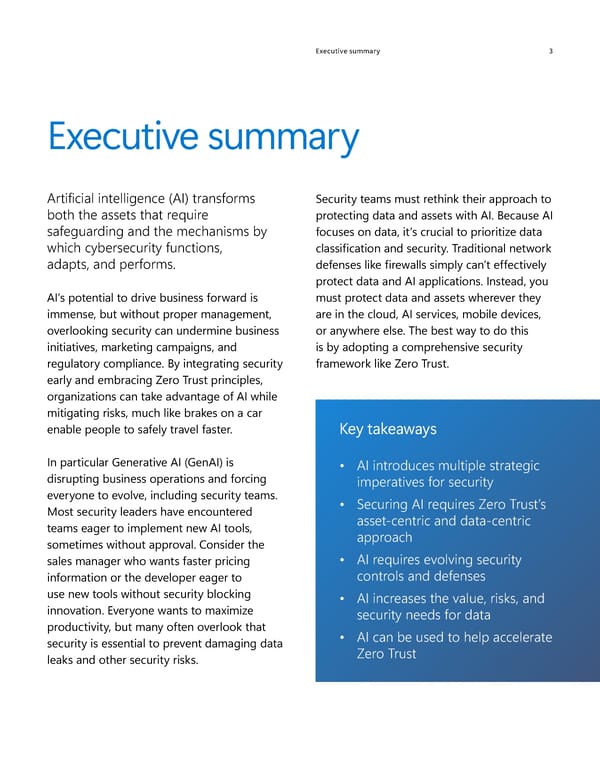Executive summary 3 Executive summary Artificial intelligence (AI) transforms Security teams must rethink their approach to both the assets that require protecting data and assets with AI. Because AI safeguarding and the mechanisms by focuses on data, it’s crucial to prioritize data which cybersecurity functions, classification and security. Traditional network adapts, and performs. defenses like firewalls simply can’t effectively protect data and AI applications. Instead, you AI’s potential to drive business forward is must protect data and assets wherever they immense, but without proper management, are in the cloud, AI services, mobile devices, overlooking security can undermine business or anywhere else. The best way to do this initiatives, marketing campaigns, and is by adopting a comprehensive security regulatory compliance. By integrating security framework like Zero Trust. early and embracing Zero Trust principles, organizations can take advantage of AI while mitigating risks, much like brakes on a car enable people to safely travel faster. Key takeaways In particular Generative AI (GenAI) is • AI introduces multiple strategic disrupting business operations and forcing imperatives for security everyone to evolve, including security teams. • Securing AI requires Zero Trust’s Most security leaders have encountered asset-centric and data-centric teams eager to implement new AI tools, approach sometimes without approval. Consider the sales manager who wants faster pricing • AI requires evolving security information or the developer eager to controls and defenses use new tools without security blocking • AI increases the value, risks, and innovation. Everyone wants to maximize security needs for data productivity, but many often overlook that • AI can be used to help accelerate security is essential to prevent damaging data Zero Trust leaks and other security risks.
 AI security and Zero Trust Page 2 Page 4
AI security and Zero Trust Page 2 Page 4